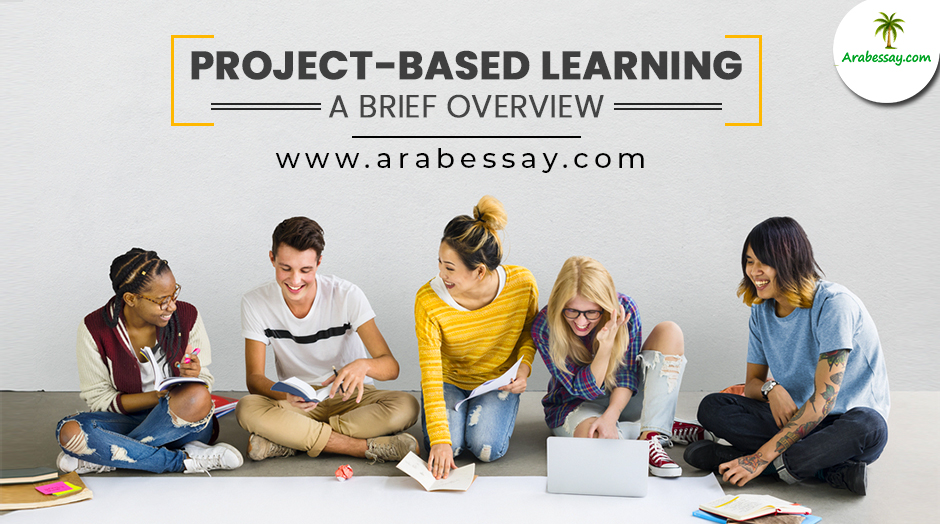Project-Based Learning | A Brief Overview

Project Based Learning also knownis an instructional methodology encouraging students to learn by applying knowledge and skills through an engaging experience. PBL presents opportunities for deeper learning in-context and for the development of important skills tied to college and career readiness. In this article we are going to give a brief overview about project based learning and discuss in details about different project based learning ideas.
Characteristics Of Project Based Learning

Here are three characteristics of meaningful project based learning activities that lead to deeper student understanding:
1.) Interdisciplinary
Project based curriculum is designed to engage students using real-world problems. This is an interdisciplinary approach because real-world challenges are rarely solved using information or skills from a single subject area. Projects require students to engage in inquiry, solution building, and product construction to help address the issue or challenge presented. As students do the work, they often use content knowledge and skills from multiple academic domains to successfully complete the project.
2.) Rigorous
Project based education requires the application of knowledge and skills, not just recall or recognition. Unlike rote learning to assess a single fact, PBL assesses how students apply a variety of academic content in new contexts. As students engage in a project, they begin with asking a question. Inquiry leads the student to think critically as they are using their academic knowledge in real-world applications. The inquiry process leads to the development of solutions to address the identified problem. They show their knowledge in action through the creation of products designed to communicate solutions to an audience.
3.) Student-Centered
In PBL, the role of the teacher shifts from content-deliverer to facilitator/project manager. Students work more independently through the PBL process, with the teacher providing support only when needed. Students are encouraged to make their own decisions about how best to do their work and demonstrate their understanding. The PBL process fosters student independence, ownership of his/her work, and the development of 21st century/workplace skills. To gather detailed knowledge about the characteristics of project based learning students can avail project based learning from ArabEssay experts.
Reasons To Adopt Project Based Learning Model
Here are 4 reasons to adopt a project based learning model:

- PBL Is A Multidisciplinary Pedagogical Approach Providing Meaningful Learning Opportunities– While project based learning can certainly be content-specific, it provides a vehicle for integrating multiple subjects into one cumulative project. PBL encourages students to make meaningful connections across content areas, rather than thinking about each subject area in isolation. For example, four teachers from four different classrooms at Huntington Middle School (PA) used their individual strengths in a rotational, project-based model to teach middle school students how to apply STEM to real-world situations. The team included a technology teacher, the library media specialist, math teacher, and science teacher who split the students into four classes and rotated them every three days. During the nine-week project, students were tasked to use STEM and ELA skills to create their own artificial island. They used knowledge from all four teachers to finish the multifaceted, cross-curricular project and presented to their classmates. Online essay writers from ArabEssay teach students about the different learning opportunities that can be availed through PBL.
- PBL Helps Build 21st-Century Skills Students Need To Succeed– As educators, it is essential to prepare our students to meet the demands of today’s changing global society. With increased engagement, PBL encourages a deeper understanding of content which develops critical thinking, communication, collaboration, and creativity, These skills are required for college, work, and life beyond school.
- PBL Provides Opportunities To Engage Students In Real-World Learning. PBL is arguably the greatest opportunity to engage students in authentic projects or performance tasks tied to real-world careers and experiences.
Challenges Of Project-Based Learning
The Intel Corporation identified several reasons why project-based learning can represent such a radical departure from what we are used to in education. PBL requires you to coach more and instruct less, to embrace interdisciplinary learning instead of remaining locked in single-subject silos, and to be more comfortable with uncertainty and discovery during the learning process.
For many instructors, PBL is a stark contrast to the traditional education they experienced. Change takes time and is seldom without apprehension and challenges. However, when we consider the types of educational experiences we value for our modern learners, it becomes apparent the traditional “sage on the stage” instructional model falls significantly short.
The truth is, though, you can overcome these PBL challenges. Good problems or ideas can come from your students, parents, or community members. Instead of lectures and book learning, teachers can think through the steps required to solve a problem and use those steps as project-learning activities. Instead of planning a massive project, the learning process can be made more manageable by chunking the project into smaller parts, with frequent checkpoints built into the timeline. Instead of a traditional summative exam, authentic assessments can be developed by communicating with professionals in the field regarding what a presentation would look like related to a particular project. Students who wish to overcome the challenges they face while learning the different approaches of project based learning can seek instant essay help from ArabEssay experts.
Conclusion
Project-based learning takes the essential characteristics of what we value most about education and puts them front and center of our formal learning environments. It is a popular and noble aspiration for educators to inspire and develop life-long learners. Undeniably, PBL helps prepare students for the “real world” since that are naturally where their learning occurs. The Intel Corporation identified several reasons why project-based learning can represent such a radical departure from what we are used to in education. The truth is, though, you can overcome these PBL challenges. Good problems or ideas can come from your students, parents, or community members. Instead of lectures and book learning, teachers can think through the steps required to solve a problem and use those steps as project-learning activities. Instead of planning a massive project, the learning process can be made more manageable by chunking the project into smaller parts, with frequent checkpoints built into the timeline. Instead of a traditional summative exam, authentic assessments can be developed by communicating with professionals in the field regarding what a presentation would look like related to a particular project.
References
DeFillippi, R. J. (2001). Introduction: Project-based learning, reflective practices and learning.
Savery, J. R. (2015). Overview of problem-based learning: Definitions and distinctions. Essential readings in problem-based learning: Exploring and extending the legacy of Howard S. Barrows, 9, 5-15.
Martin, J. G., López, C. L., & Martínez, J. E. P. (2014, October). Supporting the design and development of Project Based Learning courses. In 2014 IEEE Frontiers in Education Conference (FIE) Proceedings (pp. 1-6). IEEE.











